Ohio’s Little Beaver Creek Greenway
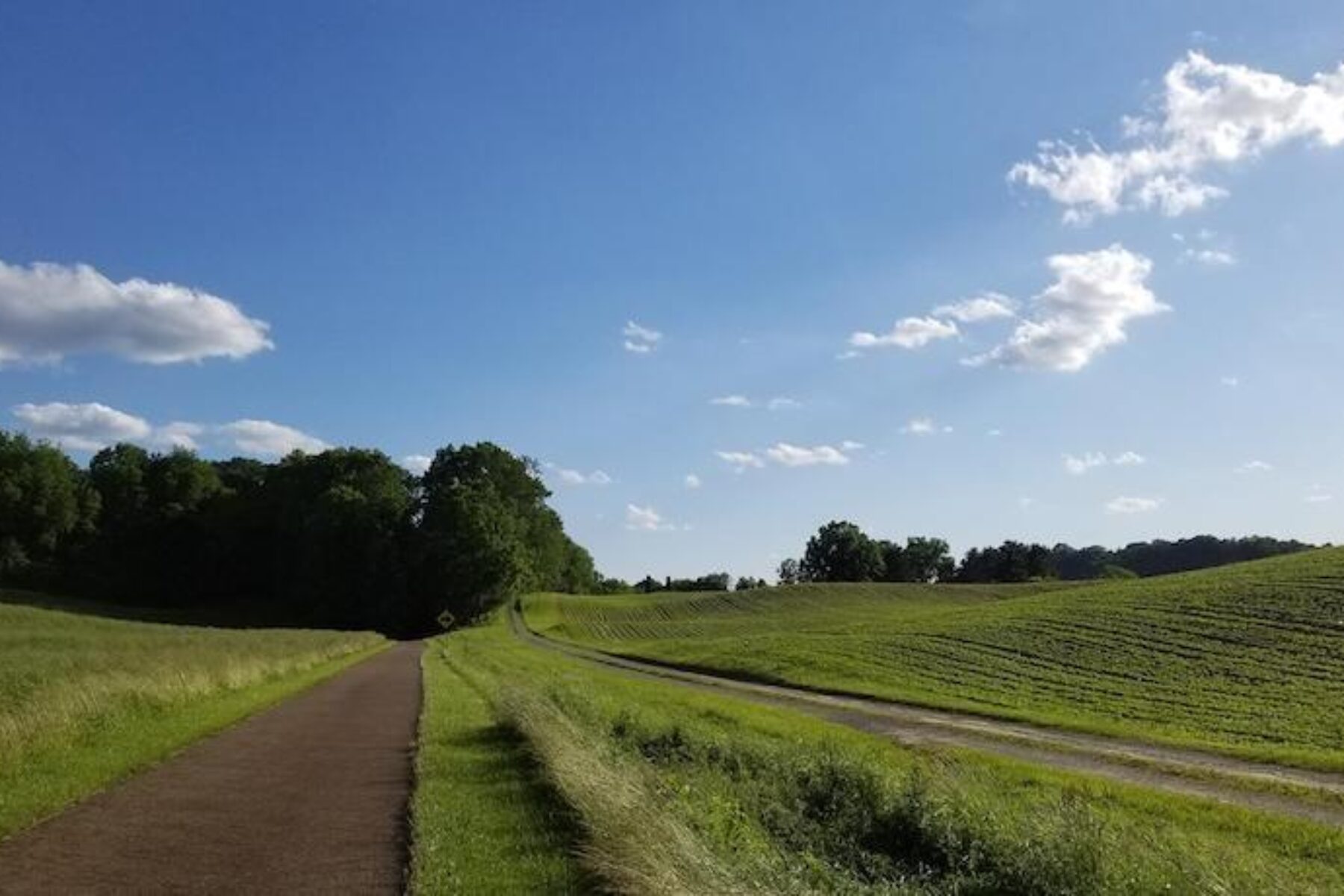
Trail of the Month: July 2020
“It’s beautiful and very well maintained…People around here really love and support the trail.”
—Laurie Anderson of nearby Mineral Ridge
Tucked away in a quiet corner of eastern Ohio, the Little Beaver Creek Greenway introduces visitors to the beauty and history of the Appalachian foothills. Located in a former railroad depot, the Lisbon trailhead is about a quarter mile from the actual start of the greenway. From there, the trail gradually rises about 450 feet over its 12.5-mile length, running north to Washingtonville.
“The trail’s just incredibly scenic,” said Eric Oberg, Rails to Trails Conservancy’s midwest regional director. “It’s in a beautiful pocket of Ohio that would otherwise not get a lot of visitors, next to a pretty creek and underneath the tree canopy. It’s a hidden gem among rail-trails.”
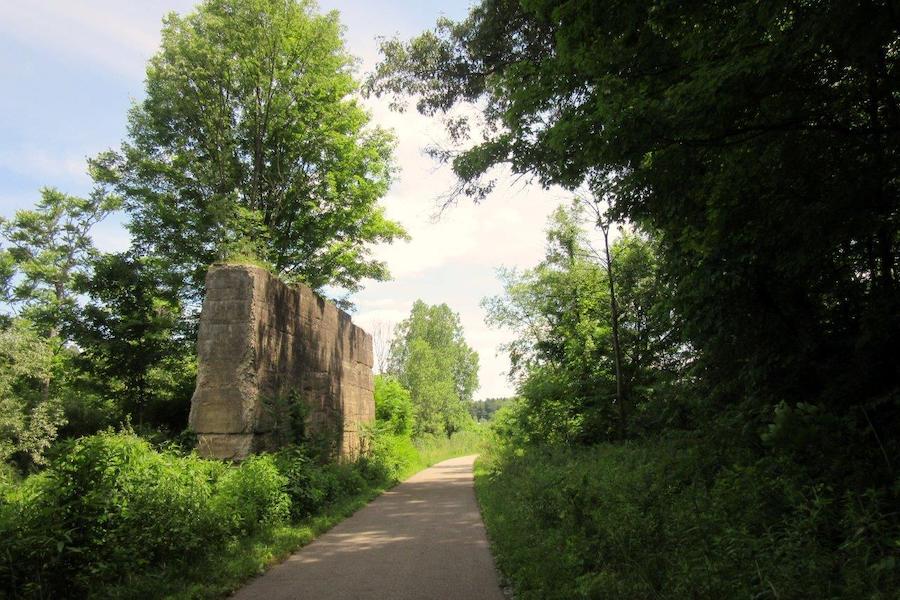
On hot summer days, that thick canopy of maple, oak and black cherry trees helps keep the trail cool. (A fence keeps trail users from jumping into the eponymous creek to further chill out.) The woods are also home to various types of wildlife, including thrill-seeking chipmunks that dart across the trail, inches from your front wheel. If you’re lucky, you can see one of the namesake beavers cross the greenway or a great blue heron in the creek.
Hiking trails head into the foothills surrounding the trail about 2 miles from the Lisbon start and at the Teegarden trailhead. Even if you’re not planning to hike, it’s worth a one-minute detour off the greenway to see the picturesque Teegarden-Centennial covered bridge that spans the creek. Jagged limestone outcroppings on the southern end of the trail eventually give way to farm fields to the north. There’s about a three-quarter-mile gap in the trail in Leetonia, forcing riders to detour onto a brick street through the sleepy downtown before the greenway resumes.
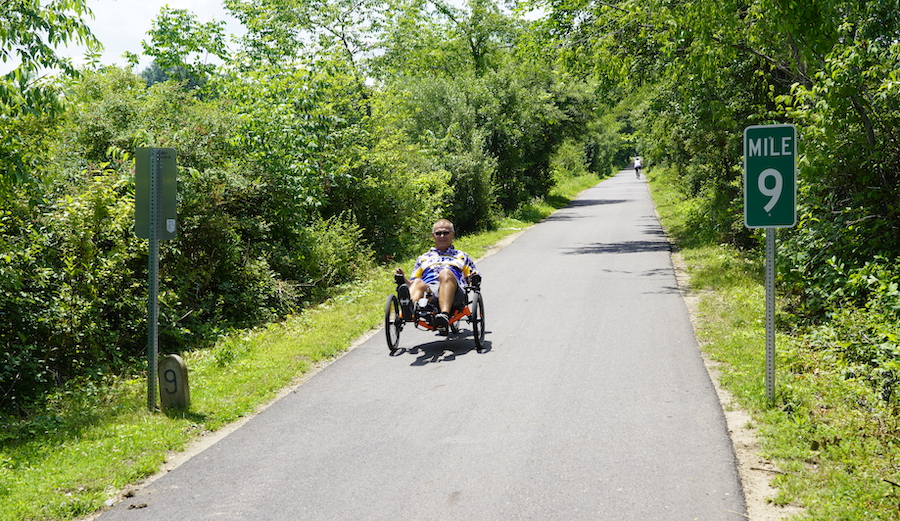
Visitors from nearby Cleveland and Pittsburgh often make the trek to ride the greenway, and on busy weekends, it can sometimes be nearly impossible to find parking at one of the five trailheads. While the greenway does bring in visitors from across the region, locals love it as well. On any given day, trail users are walking and pedaling the greenway, smiling and waving at everyone they pass.
“We love to ride new trails whenever we go on vacation, and Little Beaver Creek is one of the best,” said Laurie Anderson of nearby Mineral Ridge. “It’s beautiful and very well maintained, with no hint of trash. People around here really love and support the trail.”
What’s fairly remarkable about the greenway is that it was built almost entirely with grant money and volunteers. The Columbiana County Commissioners only allot $1,500 a year to the trail, which attracts thousands of visitors annually. With more residents using the trail during the COVID-19 pandemic, Tom Butch, the chairman of the park district board, suggested they may seek a dedicated tax levy in the upcoming election to help with maintenance and to finance further expansion.
Related: Connecting Cleveland to Pittsburgh by Trail: Unlocking the Economic Potential of 200+ Miles of Trail
Making the Big Connections
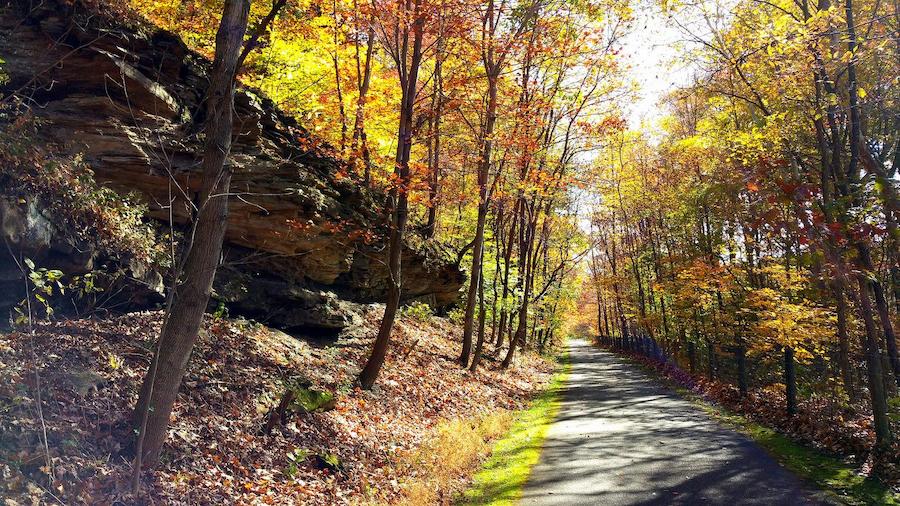
As great as the Little Beaver Creek Greenway is, it’s currently only 12.5 miles. But plans are afoot that would not only expand the trail, but also connect it to two larger trail networks, potentially drawing in significantly more bike tourists.
Earlier this year, Columbiana County began soliciting design proposals for a trail expansion of 1 to 3 miles that needs to be completed by 2022 or the grants will disappear.
Farther north of the existing trail, Mahoning County is currently negotiating with homeowners along a 6-mile stretch of potential trail. To the southeast, trail volunteers are negotiating with the Ohio Department of Natural Resources to route the expanded trail through Beaver Creek State Forest and another property. The goal is to extend the Little Beaver Creek Greenway to the Ohio River and the “Point of Beginning,” where the formal survey of the Northwest Territory began back in the late 18th century. Park board member Dottie Betz has biked through the suggested expansion route, believing it’s the greenway’s destiny to extend to the Ohio River.
“It’s been a dream of mine to get [the greenway] to the river,” Betz said. “I’ve been riding the trails and roads for more than 30 years. To be a part of this process and help make it happen [would be a dream come true].”
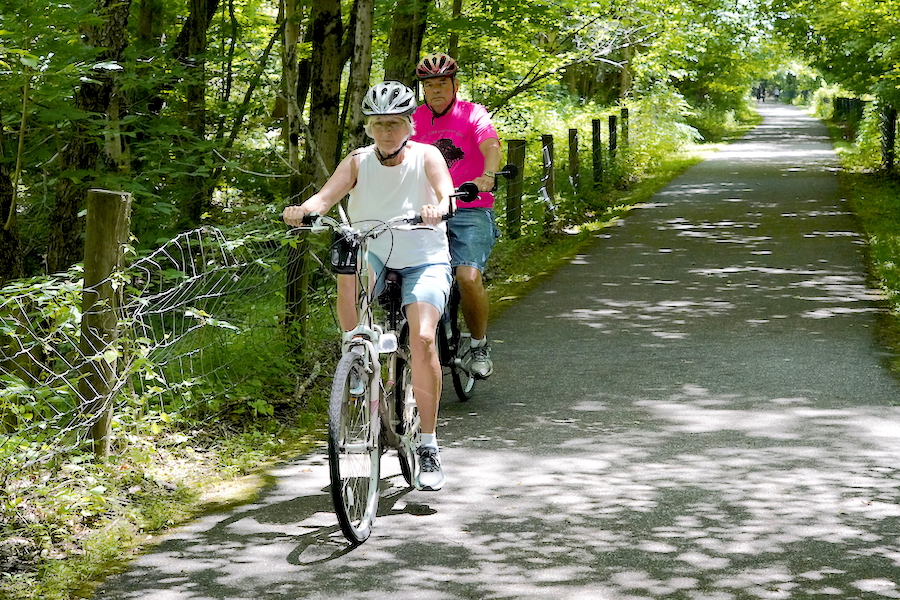
Once the expansion is completed, the Little Beaver Creek Greenway would be the southern terminus of the 120-mile Great Ohio Lake to River Greenway, stretching from the Ohio River to Lake Erie. Large swaths have already been completed, much of it on the same railroad right-of-way. The 43-mile Western Reserve Greenway is the largest segment of the trail, running through most of Ashtabula and Trumbull counties, where it connects with the Niles Greenway and Mill Creek MetroParks Bikeway in Mahoning County.
Trail plans for the remaining gaps in those counties have been created, while the planned southern expansion of the greenway remain in the concept phase. Trail user Becky DePanicis said several private landowners are fighting the expansion, but believes it will eventually be completed. There’s currently no firm timetable for the last push to the Ohio River.
The expanded trail would also become an important part of the Ashtabula to Pittsburgh hub of the Industrial Heartland Trails Coalition’s 1,500-miles-plus network. More than 3.5 million people living in 51 counties across four states—Pennsylvania, West Virginia, Ohio and New York—live within 3 miles of an Industrial Heartland trail, making it a recreation and transportation hub, not to mention tourism generator.
New Life for an Old Rail Line
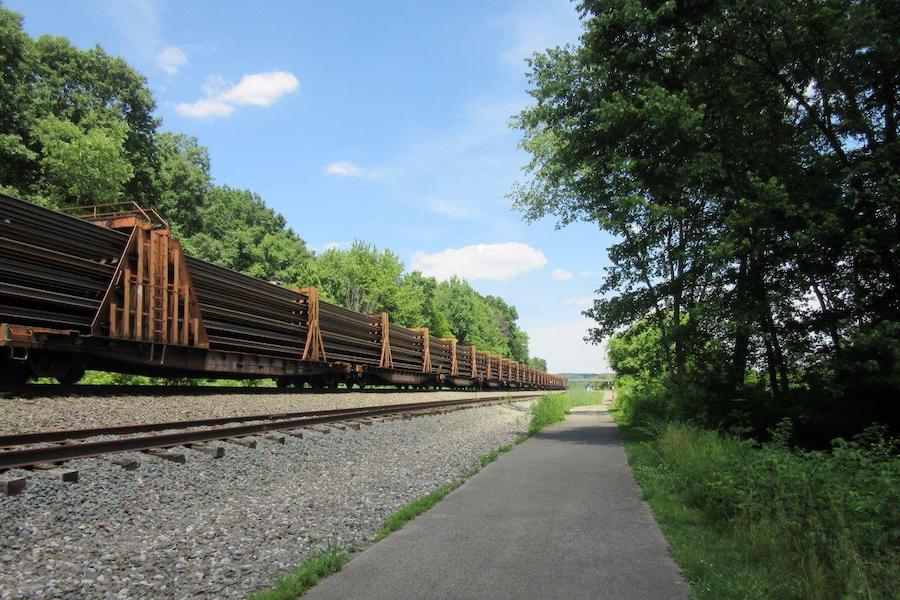
Remnants of the area’s industrial heritage can still be found along the trail. In Leetonia, near the northern terminus of the greenway, the Beehive Coke Ovens Park sits on the remnants of 200 coal-fired ovens built in 1866. Burning the coal without oxygen creates coke, which burned hot enough to melt iron. More than 70,000 tons of coke were produced annually during the site’s heyday, shipped by rail car to Pittsburgh and other iron-producing cities. The ovens were permanently closed in 1930, but like the rail line, would find new life decades later. In the 1990s, the site was turned into a park and nature preserve, and the coke ovens added to the National Register of Historic Places.
The greenway is built on the right of way of the Pittsburgh, Lisbon & Western (PL&W) Railroad line. For most of the first half of the 20th century, the PL&W ran both freight and passengers throughout Pennsylvania and Ohio. When the PL&W ran into increasing financial difficulties in the late 1950s and early 1960s, it merged with the Erie Lackawanna Railroad. The outlook improved for a short time but took another downturn in the following decades.
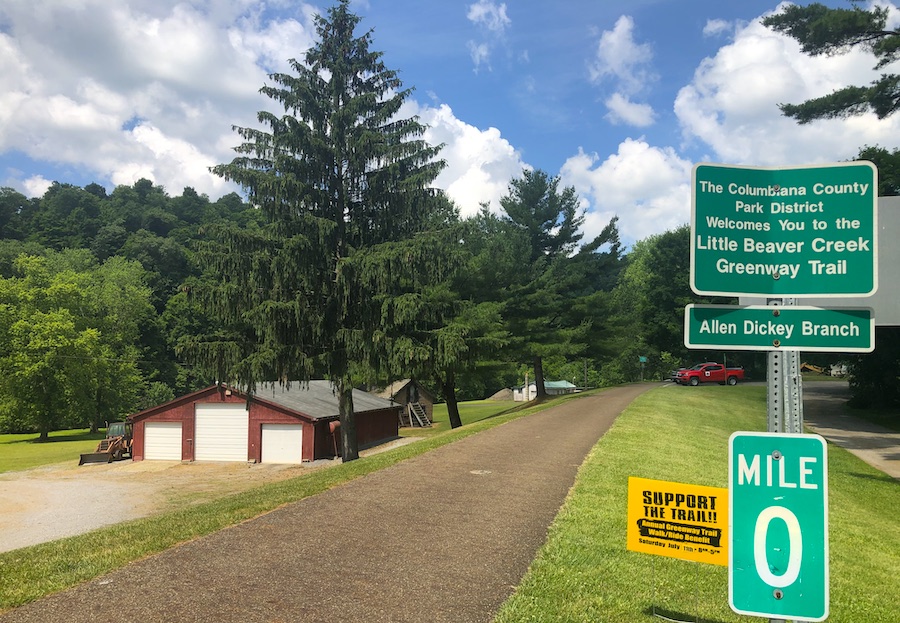
After the railroad abandoned the track, much of it fell into the hands of local philanthropist Allen Dickey, who would later donate it to Columbiana County. The first 10 miles of trail were built in 2000. Twenty years later, the trail may be as important to the local community as the former railroad.
DePanicis’ father, Ralph Archer, was an engineer on the railroad’s Lisbon Local route for years. She loves that the trail has given the rail corridor new life.
“Dad loved that particular job,” DePanicis said. “It was a nice trip through pretty countryside. People who lived along the tracks would come out and wave every day.
“Dad knew that route blindfolded, so when the tracks were removed and a bike trail started, he warned me that it wasn’t as flat as it seems—a lesson I quickly learned … I wanted to honor my dad with a bench along the bike trail, and Columbiana County was happy to receive it. It makes me happy to see it near Franklin Square, knowing how many times over the years that dad passed the very same spot.”
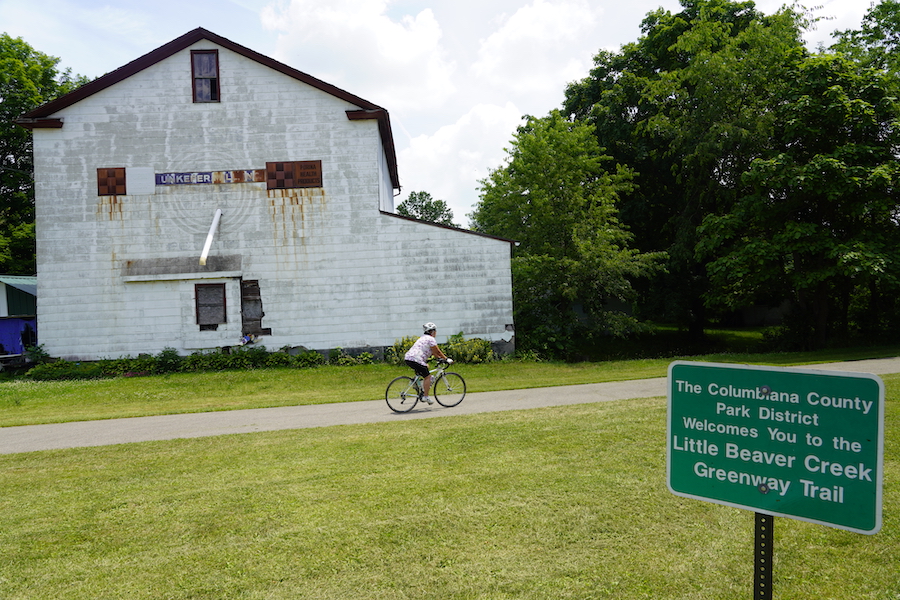

Donate
Everyone deserves access to safe ways to walk, bike, and be active outdoors.
